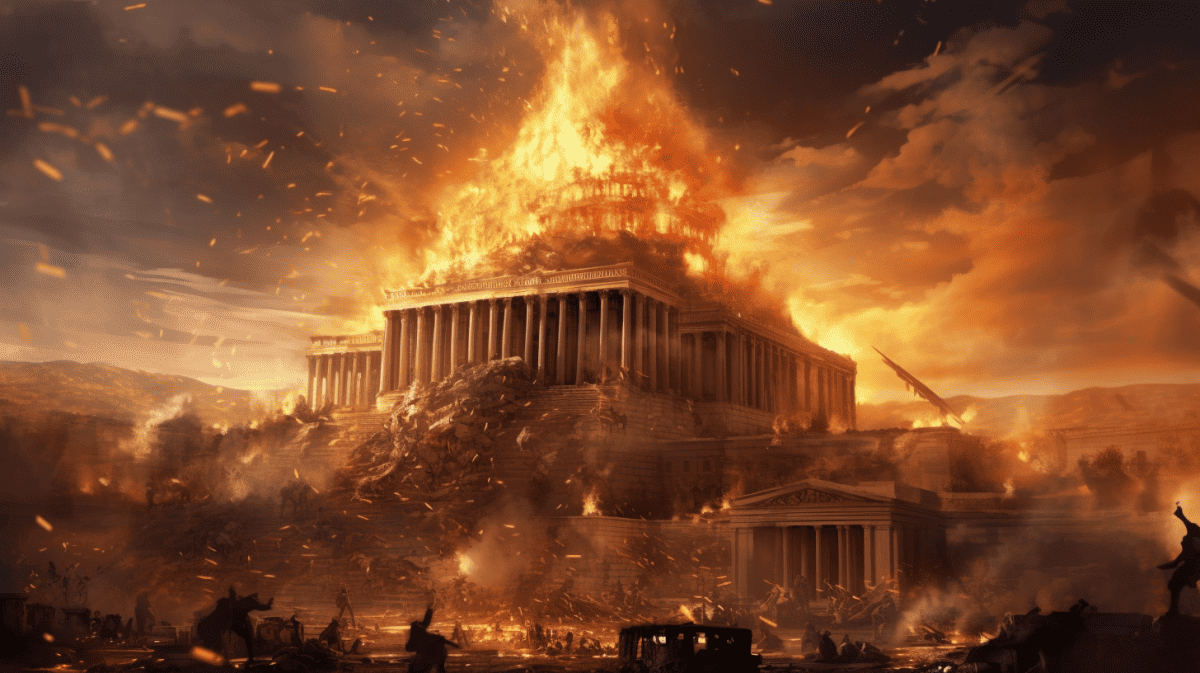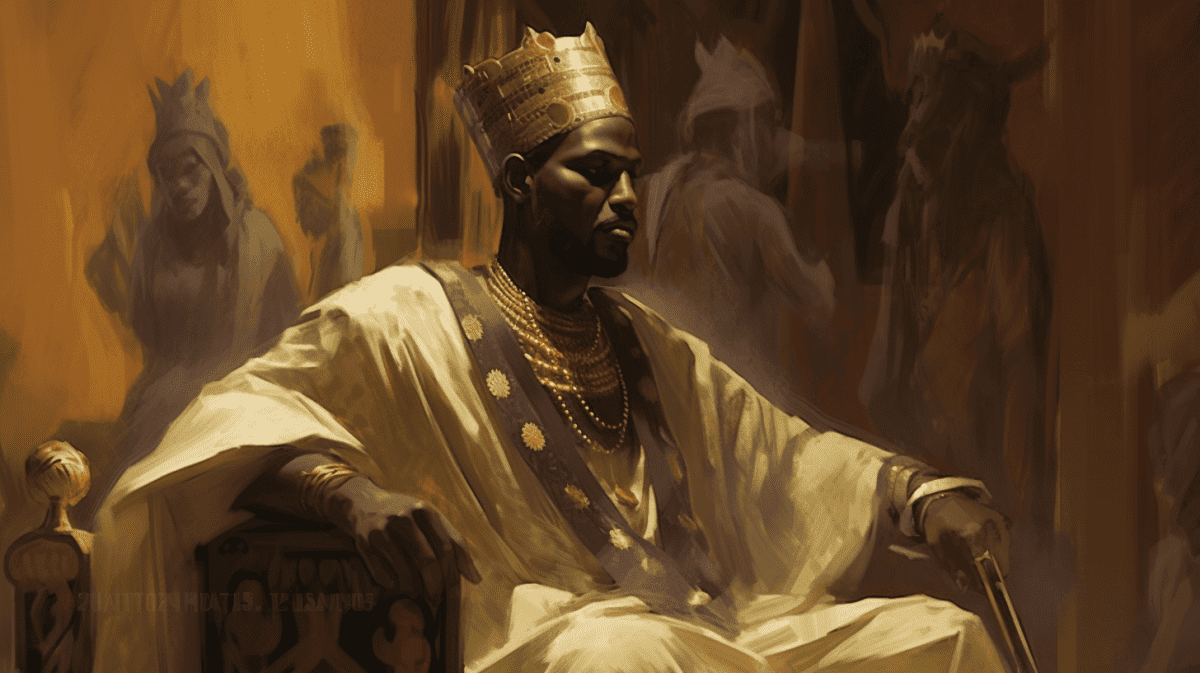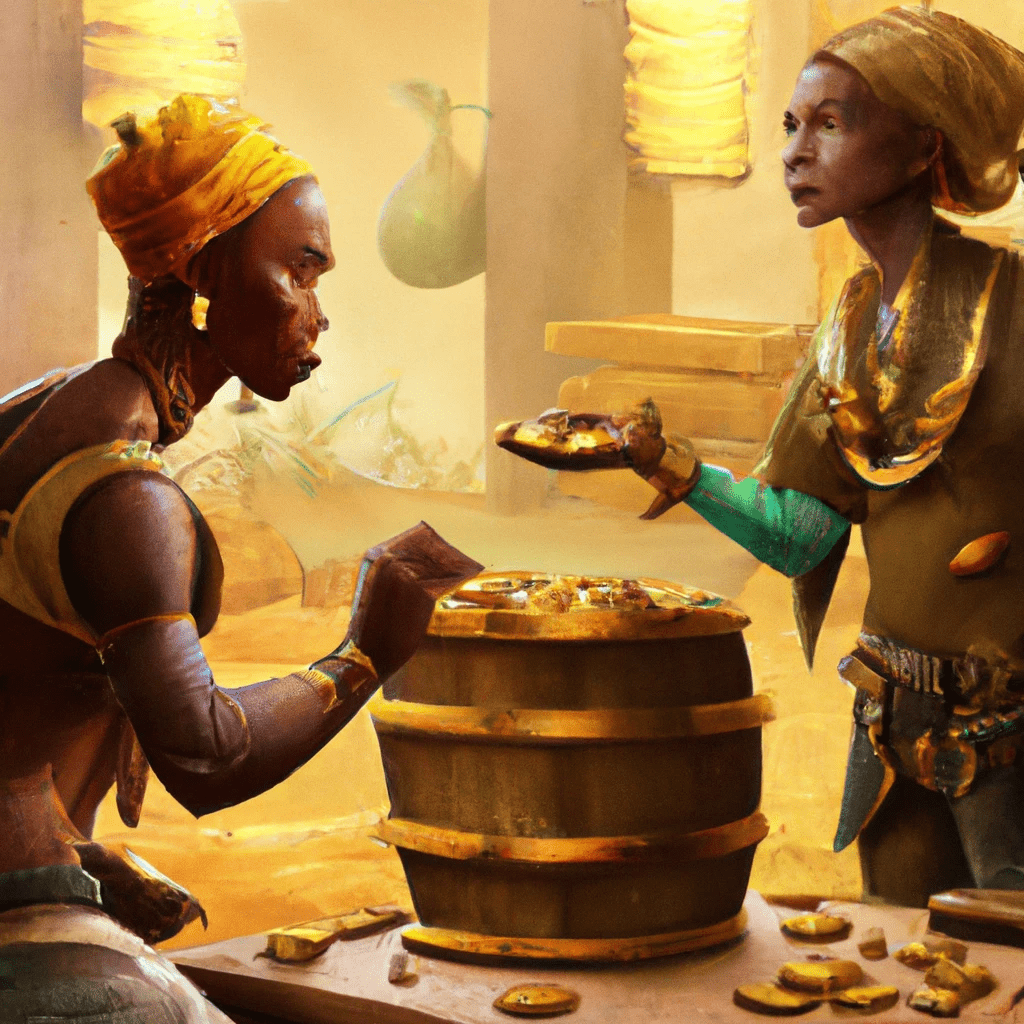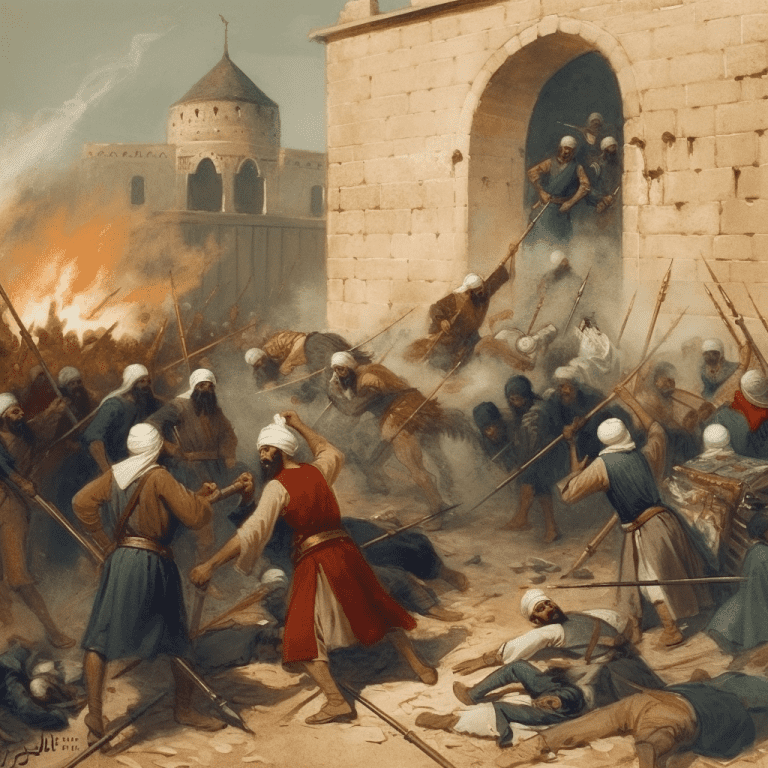The University of Sankore, located in Mali, dates back to the 12th century and is one of Africa’s oldest educational institutions. Renowned for its manuscripts and scholars, it was a beacon of knowledge during the Islamic Golden Age, attracting students and thinkers from across the continent.
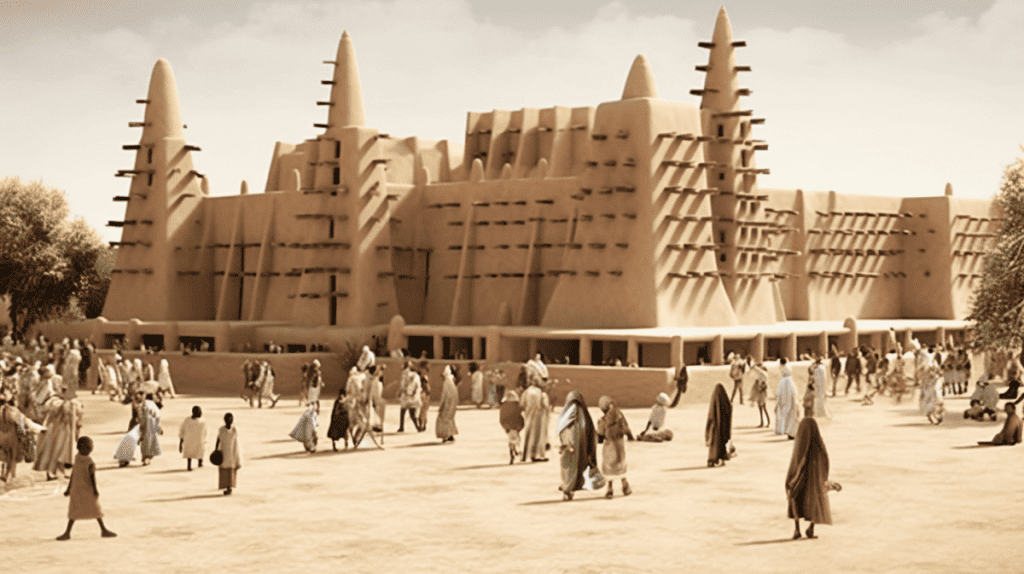
A Centre of Learning
Timbuktu was a famed hub for traders from North Africa and the Middle East. Before long, not just goods but also ideas permeated this legendary city. Given that a majority of these traders practised Islam, the mosque frequently welcomed visitors. This house of worship soon amassed a vast collection of books from across the Islamic world, evolving into a beacon of knowledge. Timbuktu’s esteemed reputation drew larger audiences and enhanced the madrasa’s populace. In this city, books garnered more value than most goods, leading to the emergence of private libraries in scholars’ residences. The trove of manuscripts at Sankoré Madrasa reflected its ties to other eminent Islamic educational centres. A revered class thrived at the Sankoré mosque, earning the respect of both locals and international dignitaries. Even the Songhai royalty would grace them with lavish gifts during Ramadan.
The University of Sankoré impressively accommodated over 25,000 students, accounting for nearly a quarter of Timbuktu’s population of that era, within its 180 establishments.

Governing the Academy
A crafted wooden gateway led to the interiors of Sankoré Madrasa in 1993. Unlike traditional medieval universities, where students studied under one institution and received degrees from the same, the University of Sankoré presented a distinct structure. There was no centralised administration, student directories, or a set curriculum. Instead, the institution comprised multiple individual madrasas, each supervised by its own imam or ulema, akin to today’s dean.
This set-up is amongst the earliest versions resembling today’s residential college framework. Students typically remained under the guidance of one teacher for a decade, mirroring an apprenticeship. However, some had the flexibility to explore teachings at various madrasas. Lessons were either conducted at the mosque or the educator’s residence. While many madrasas thrived on the Islamic tradition of waqf (philanthropic contributions), those at Sankoré Madrasa self-financed their studies either monetarily or through trade.
Architectural Insights
The central open space was precisely designed to echo the dimensions of the Kaaba in Mecca, one of the most revered Islamic landmarks. Teaching sessions were held in the open expanses of the mosque-like edifice, constructed primarily of clay and robust stone beams.

Despite the passage of time, the university remains unscathed, probably attributed to Al-Sahili’s foresight in embedding a wooden structure within the mud walls for post-rainy season reparations. Since its primary purpose wasn’t worship, the University of Sankoré was more modest and less ornate compared to earlier Malian architectural marvels like the Great Mosque of Djenné.
Curriculum of the University of Sankore
Islamic education in West Africa traces its origins to the 11th century. Originally tailored for the elite, the Qur’an’s strong advocacy for educational equality democratized learning, enhancing literacy levels. A clear emphasis in the Qur’an and hadiths is on the pursuit of knowledge. During Islam’s Golden Age, education took centre stage. A prominent scholar from Timbuktu, Al-Kābarī, who also taught at the Sankoré Madrasa, played a pivotal role in shaping the curriculum, mainly around religious tenets. Under the Songhai Empire, Mali transformed into a trading nucleus, leveraging its economic prowess to amplify Islamic education. Timbuktu alone hosted 150 Qur’anic institutions, becoming an influential educational beacon in the Islamic realm, churning out illustrious jurists, historians, medics, and theologians. It was institutions like Sankoré Madrasa that first introduced a standardized curriculum for Islamic and Qur’anic studies.
The Qur’an’s teachings were central. In debates, any point not rooted in the Qur’an was deemed invalid. Madrasas, distinct from orthodox Qur’anic schools, prioritized Arabic linguistics to decode sacred texts. Yet, over time, Sankoré broadened its syllabus to embrace subjects like geometry, astronomy, mathematics, and history, all inspired by its vast manuscript collection. Circa the 16th century, with Islamic education flourishing, Sankoré educated 15,000 to 25,000 scholars across its 180 establishments, simultaneously evolving as a hub for manuscript artistry and commerce. Between the 14th and 16th centuries, its enrollment and curriculum footprint amplified.
Education at Sankoré spanned four tiers or “degrees”, each culminating in bestowing students with a symbolic turban.
Educational Tiers
Scholars of the University of Sankore
Long before their interactions with Arabian and Western cultures, African civilisations flourished in literature and the arts. The academics at Sankoré University were truly top-notch, so much so that they left even the most erudite Islamic scholars in awe. Many of them went on to grace the faculties of esteemed institutions in Morocco and Egypt. These scholars were multifaceted, tasked with not just imparting knowledge within the university but also with amplifying the madrasa’s reach across the Islamic world. Under the stewardship of Askia Daoud, the Songhai empire’s ruler from 1549-1583, the university expanded, boasting 180 establishments and educating 25,000 students. At the helm of each of these establishments was a singular Ulema, making up a council of 180 distinguished scholars.
Luminaries of Learning
Among the many luminaries, figures like Abu Abdallah, Ag Mohammed ibn Utman, and Ag Mohammed Ibn Al-Mukhtar An-Nawahi stand out. Hailing from affluent and devout backgrounds, many were associated with the Sufi Qadiriyya order. Ahmad Bamba’s name shines the brightest, having helmed Sankoré Madrasa as its final chancellor.
A testament to the vibrant intellectual milieu of West Africa pre-colonialism, Ahmad authored over 40 books, each delving into distinct subjects. He also distinguished himself as a vocal opponent of the Moroccan invasion of Timbuktu in 1591. Unfortunately, this led to his incarceration and subsequent exile to Morocco, resulting in the tragic loss of his 1600-book collection, one of that era’s most magnificent libraries.
Journey of Faith and Knowledge
Beyond their academic pursuits and knowledge conservation, Timbuktu’s scholars were deeply spiritual. Many undertook the Hajj, the revered pilgrimage to Mecca, engaging with intellectuals from various Muslim regions during their journey. En route back, in a demonstration of humility and the shared pursuit of knowledge, they learnt from esteemed scholars in Cairo and even offered teachings to students in cities like Kano, Katsina, and Walata. Notably, Mohammed Bagayogo was conferred an honorary doctorate in Cairo during his sacred journey to Mecca.
Decline of the University
By the culmination of Mansa Musa’s rule in the early 14th century CE, Sankoré Masjid had evolved into a fully established madrasa, boasting a book collection rivalling the famed Library of Alexandria.
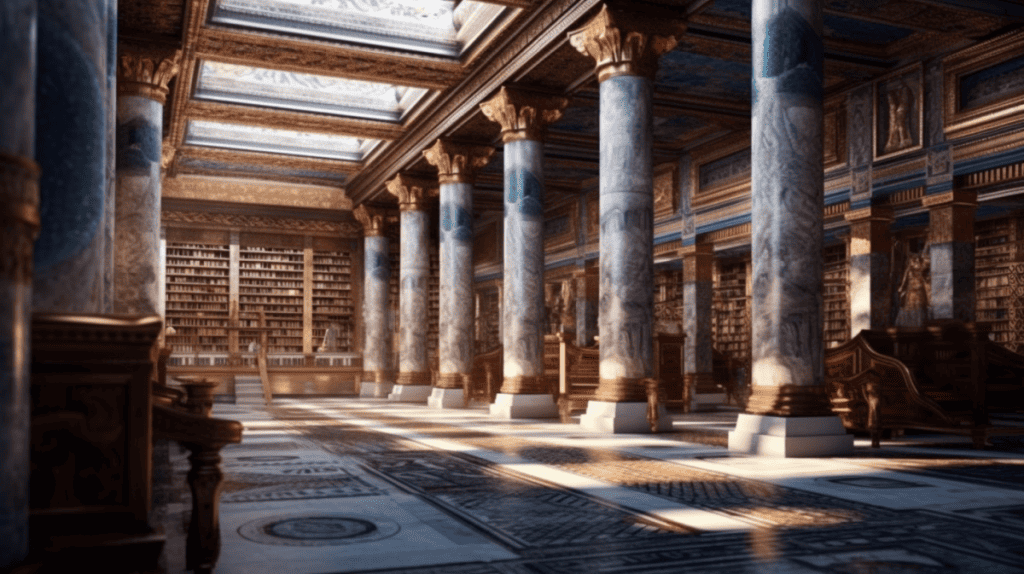
When the Songhai Empire flourished under Askia Muhammad, it marked Sankoré madrasa’s golden era, attracting intellects from places as distant as Cairo and Syria. Astonishingly, at its zenith, the madrasa had a higher foreign student enrollment than New York University’s 2008 tally. Timbuktu’s Sankoré University offered a calibre of education that eclipsed many renowned Islamic centres globally. Many scholars from Sankoré would integrate their educational endeavours with the religious pilgrimage, Hajj. The manuscript trade became a pivotal facet of the university, churning out a multitude of scholarly works. Capable of accommodating 25,000 students, the Sankoré Masjid also prided itself on its vast library, which held an impressive 400,000 to 700,000 manuscripts.
However, 1591 AD witnessed a tragic turn when Ahmad al-Mansur of Morocco, post the Battle of Tondibi, ransacked Songhai, including the prized Sankoré Madrasa, marking the beginning of a prolonged downturn for the West African nations. Shortly after the passing of Askia Daoud, the Songhai Empire’s last monarch, Imam al-Aqib, the revered mosque restorer and Timbuktu’s chief Qadi, met his end due to natural causes.
The University of Sankore today
The Sankoré Madrasa’s historical integrity is facing threats due to rapid urban expansion and modern construction activities in Timbuktu. The establishment of the Ahmad Baba Center, coupled with issues like flooding and inadequate conservation efforts, has unfortunately left lasting scars on the mosque. This has placed the age-old building methods in jeopardy. That said, there’s a silver lining. Several committees are currently receiving government backing to mitigate further deterioration. Working in partnership with the World Heritage Center, the Management and Conservation Committee of the Old Town has ambitious long-term strategies. They aim to establish a 500-foot protective perimeter around the madrasa and lay out a vision for mindful urban growth.
Related Posts
Sources
- Wikipedia contributors, “Sankore Madrasah,” Wikipedia, last modified [28th September, 2023], https://en.wikipedia.org/wiki/Sankore_Madrasah#:~:text=The%20University%20of%20Sankor%C3%A9%20has,the%20Chief%20Qadi%20of%20Timbuktu.
- [BlackPast.org], “Sankore Mosque and University (c. 1100),” BlackPast, [Publication Date, which you’ll need to check the webpage for], https://www.blackpast.org/global-african-history/institutions-global-african-history/sankore-mosque-and-university-c-1100/.
- [ThinkAfrica.net], “University of Sankore, Mali (989 CE – Present),” Think Africa, [Publication Date, which you’ll need to check the webpage for], https://thinkafrica.net/university-of-sankore-mali-989-ce-present/.


